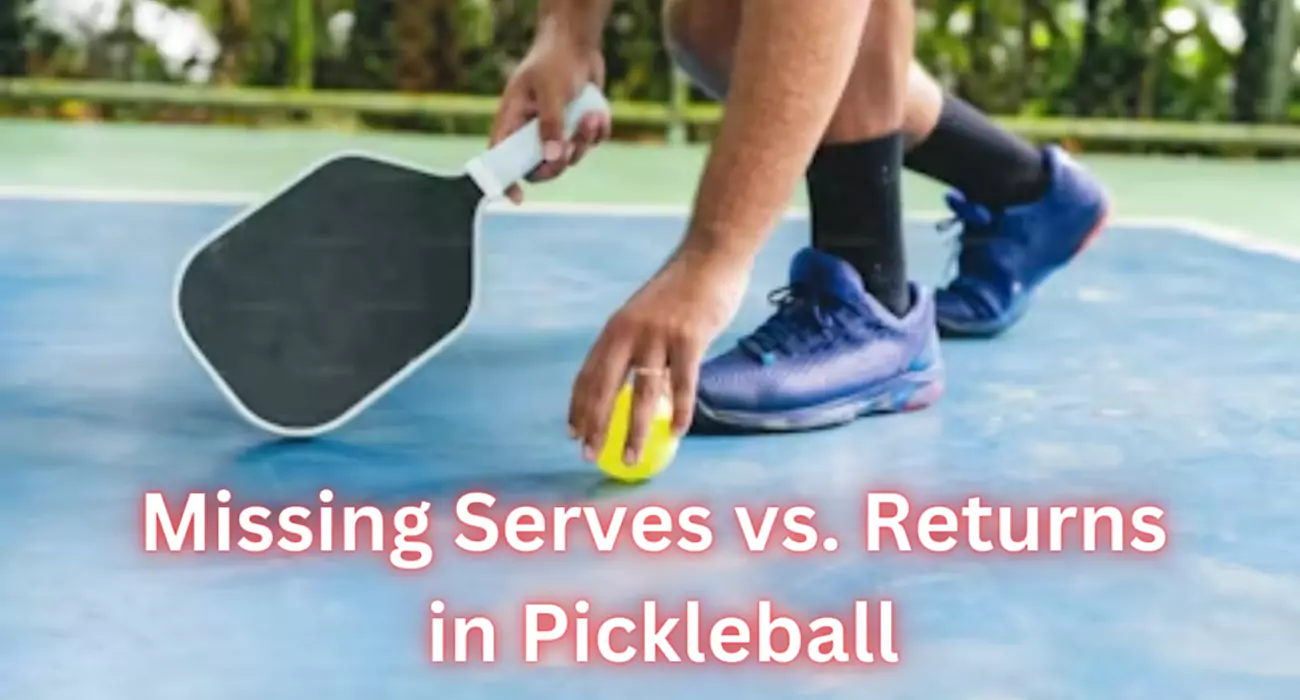In the fast-paced world of pickleball, every serve and return matters. Whether you’re a beginner learning the skills or a seasoned player honing your skills, the question often arises: which hurts your game more, missing serves or returns? Let’s dive into the strategic and psychological reasons why one might be worse.
Understanding the Stakes
Pickleball is a game of strategy and precision. Both serving and returning require focus, technique, and split-second decision-making. A missed serve hands your opponent an easy point, while a failed return sets them up for an offensive advantage. Each mistake comes with its own set of consequences, affecting not only the score but also the momentum and psychology of the match.
Pain of a Missed Serve:
A missed serve can be a frustrating setback. Whether it’s hitting the net, going out of bounds, or landing in the wrong spot, a failed serve immediately puts you on the defensive. It’s not only about losing the potential point; it’s about losing control and giving the opportunity to your opponent. As some players say, “A missed serve means you only lose a chance of getting a point.” A missed serve can have a long-term psychological influence on your confidence and rhythm.
Agony of a Failed Return:
On the other hand, a failed return can be equally demoralizing. When you’re on the receiving end of a serve, you aim to neutralize the opponent’s advantage and regain control of the point. A missed return not only gives your opponent an easy point but also disrupts your game plan. It’s a missed opportunity to seize momentum and pressure your opponent, leaving you scrambling to recover and regain your footing.
Strategies for Success:
Focusing on technique, consistency, and mental resilience is essential to minimize the pain of missed serves and returns. Practice precision and placement for serving, aiming to keep the ball low and close to the net while avoiding errors. Work on developing a reliable serve that you can execute under pressure, ensuring you start each point on your terms.
When it comes to returning, anticipation and footwork are key. Position yourself effectively to anticipate the opponent’s serve, staying balanced and ready to react quickly. Focus on making solid contact with the ball and returning it with depth and accuracy, putting pressure on your opponent and setting yourself up for success.
The Importance Of Wrist Health For Pickleball Players
Tips For A Powerful One-Handed Backhand Drive In Pickleball
Mastering Both Serves and Returns
The key to success in pickleball is to develop strong skills in both serving and returning; remember these simple tips. First, when you’re serving, be confident. Try different serving methods, like underhand or sidearm, until you find the best. Second, For returns, focus on reading your opponent’s serve and positioning yourself for a good shot. Watch how they stand and move to hit the ball back. Lastly, practice a lot. Spend time practicing your serve and how you hit the ball back during training. The more you practice, the better you’ll get.
Conclusion
There’s no definitive answer to which is worse. In the game of pickleball, both missing serves and returns can sting, but the key to success lies in how you respond to these challenges. However, considering the potential point loss and the psychological impact, a missed return is generally considered a more critical mistake than a missed serve. Remember, even the pros miss shots. Don’t let a missed serve or return derail your game. Stay focused, learn from your mistakes, and keep the pickleball flying.

